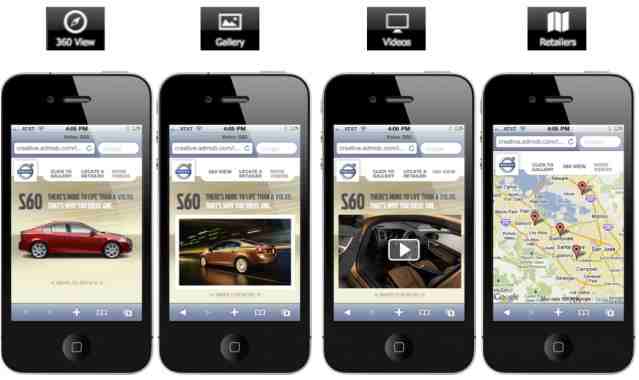

In-app ads have been hailed as the fastest-growing sector of mobile advertising, but that future could be bleak unless magazine publishers use effective strategies that entice rather than repel readers. Banner ads, pop-ups and interruptive ads, or ads that try to trick users for a click, are surely doomed to fail. Another weak strategy is treating mobile advertising as simple extensions of traditional online campaigns.
Since mobile publishing apps provide specific advertising advantages as well as potential pitfalls, it’s important to develop a desirable user experience that is primed to succeed.
Successful User Experience
The first key to in-app ad success is to take advantage of the ability to target users with the right ad at the right time. As VentureBeat points out, you want magazine app ads that:
- Capture audience attention without being irritating
- Encourage audience interaction
- Give your users greater control over their situation
Rich Media Ads
 “Rich media ads” are a growing trend that are quickly shoving display ads out of the way. Unlike display ads that simply display a product or service, rich media ads let users control how they view and interact with information regarding that product or service.
“Rich media ads” are a growing trend that are quickly shoving display ads out of the way. Unlike display ads that simply display a product or service, rich media ads let users control how they view and interact with information regarding that product or service.
Users can click or roll over a rich media ad to check out the interactive content. Go one better by placing these ads where natural breaks occur in the content, rather than stuck in the margins or isolated on their own.
Prime examples of rich media ads are already piling up, with several major brands putting them to use.
- Westin Hotels and Resorts created an ad that proclaimed “tap here to warm up” as virtual frost covered the device’s screen. Users that swiped away the frost were privy to photos of eight different Westin hotels and resorts located in warm and sunny climates.
- Best Buy played up the interactive capabilities with a holiday in-app ad that made a game out of buying gifts for various members of the family.
Location-based Ads
Because mobile devices can track a user’s physical location, another smart move is showcasing ads that target that location. For example, when a person happens to be using your magazine app in a location near a local coffee shop or restaurant chain, users may be privy to ads that offer deals on a cup of coffee or entrée.
Finding out users’ locations is the tricky part, although you could do so by requesting users enter their location if they wish to receive relevant deals. Digiday says to put your inquiry in the right context, such as telling users you’re asking for their location to serve up special deals. This way the request can be effective instead of creepy.
Location-based ads are having huge success for HopStop, since it already knows users’ locations due to the nature of its services. HopStop offers directions for users to get to their desired location, letting HopStop automatically know where a user is likely to be located at the moment as well as the route they’re likely to take to get where they want to go. Major advertisers with HopStop include McDonald’s, The New York Times and big-name retailers such as Wal-mart.
Increased Engagement
According to MediaBrix, in-app ads have the power to yield 20 percent engagement rates (that’s a measurement of how many people mention a brand on social media) and produce click-through rates 2,000 percent higher than traditional web advertising. Your magazine can leverage that power with effective advertising strategies that make the most of the interactive functionality while being careful not to irritate your readers.
